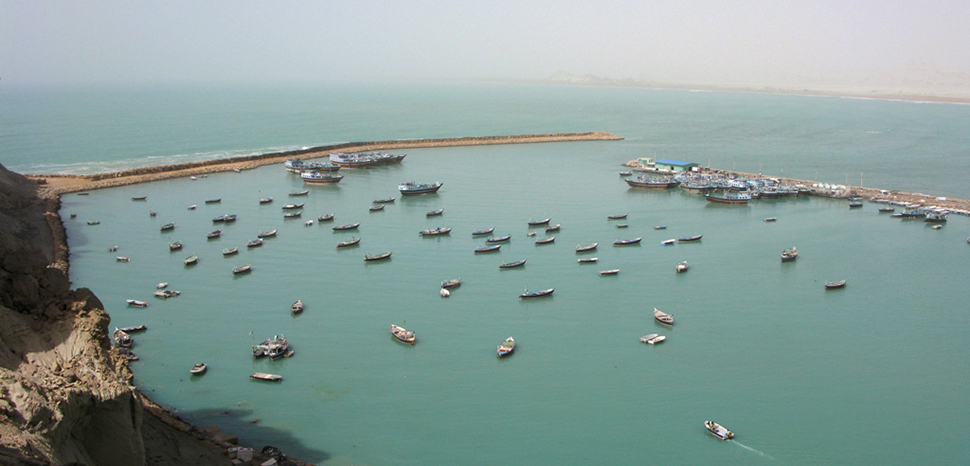Dr. Imran Khalid

Over the past few years, and most notably during recent border clashes in Ladakh’s Galwan valley, China-India relations have been visibly more acrimonious, confusing, and inimical in diplomatic and military domains, despite their huge mutual business interests.
In 2021, trade between the two neighbors grew by 44 percent. India’s imports from China grew from $66.7 billion in 2020 to $97.5 billion, and during the same period, the volume of Indian exports to China jumped to $28.1 billion, displaying hefty growth of 34.9 percent. But ironically, this gigantic volume of bilateral trade has not been able to muffle the ever-growing mutual suspicion and distrust between Beijing and New Delhi. Particularly, after the launch of China’s third and most advanced indigenously-built carrier Fujian on June 17, India’s deliberate attempts to increase its sphere of activities in the South China Sea and Asia Pacific are now becoming more rancorous. India hastily completed the fourth phase of sea trials of its indigenously built INS Vikrant on July 10, with a target of its commissioning on August 15 to commemorate Independence Day celebrations, dubbed “Azadi ka Amrit Mahotsav.”
Frictions between Beijing and New Delhi have been intensified further ever since China started working on its ambitious Belt and Road Initiative (BRI). India, which also has historic business and security interest in this region, is quite wary of the Chinese plan to keep enhancing its maritime power in the East China Sea and South China Sea to facilitate commercial traffic between the Pacific and Indian oceans, and at the same time, keep spreading its network of rail and road connectivity throughout the southeast to ensure a smooth flow of trade between regional countries and mainland China. Coupled with the Chinese intention of creating a “Digital Silk Route,” the BRI has generated anxiety in New Delhi, leading to a collaborative approach – with the support of Washington – intended to find ways to respond to and even disrupt the Chinese plan. India has adopted the strategy of establishing two parallel networks of connectivity to counterbalance the BRI, focused on sea routes as well as land routes. Under the banner of its Act East Policy, India is aggressively trying to foster relations with the ASEAN countries. In mid-June, India co-hosted the ASEAN foreign ministers meeting in New Delhi with a clear intention to rekindle its involvement in multiple initiatives and joint ventures in the region, ranging from public health, IT infrastructure, agriculture, defense, and trade. Currently there are 30 dialogue mechanisms between India and ASEAN, involving various sectors
India is fervidly working on the India-Myanmar-Thailand Trilateral Highway, a 1,400 kilometers-long project that will connect the northeastern states of India with the ASEAN region, with a future plan to extend it further eastward to Cambodia, Laos, and Vietnam. This Trilateral Highway is being built with a sole purpose of building a “parallel” structure to the BRI in the ASEAN region. Indians are now eager for the completion and operationalization of this road link, which will enable smooth land access all the way through to Vietnam – a country that remains a strong bilateral partner in many joint oil and gas exploration projects in the South China Sea. At the same time, India is working on another ambitious project, Chabahar Port, which is located on Iran’s southern coast in the Sistan-Baluchistan province. In the last few years, thanks to generous investment by India, the Chabahar Port has become a reality, handling almost 5 million tons of cargo annually. The project also includes a free trade zone, the 628-km Chabahar- Zahedan railway track, and a 1,000-km track to Sarakhs on the border with Turkmenistan. India has invested in this project with two reasons in mind. One, to provide direct trading connectivity with Iran as well as an alternate route to Afghanistan, bypassing Pakistan. Secondly, to create a strategic counter to CPEC (the China-Pakistan Economic Corridor), an important branch of Belt and Road in South Asia which starts from Pakistan’s Gwadar Port just 170 km away from Chabahar.
Thus, India has established a parallel corridor to connect the Indian Ocean with Russia and Europe through Central Asia. In addition to competing with Beijing via a parallel roads and rail tracks in the region, New Delhi has also intensified its presence through oil and gas exploration projects with ASEAN neighbors in the South China Sea. Being a very active member of the Quad, New Delhi feels that it has some room to “disturb” the Chinese presence in the region due to its backing from the US, Japan, and Australia under the umbrella of Quad. India is also part of many regional and subregional defense agreement and frameworks, including ASEAN Defence Ministers’ Meeting + (ADMM+) and Expanded ASEAN Maritime Forum (EAMF). Although the Indians also know it all too well that their pockets are not deep enough to challenge and emulate China’s development projects and infrastructure, they deliberately want to keep a “simmering friction” alive with China, in order to have their footprints in the South China Sea and Southeast Asia. They want to at least establish their status as an “authentic” middle power in the Indo-Pacific region as well as to create some sort of balance of power to keep the Chinese presence within an “acceptable” level – of course, under the tutelage of the Pentagon, which has recently dubbed China a “threat” in recent NATO documents.
No comments:
Post a Comment